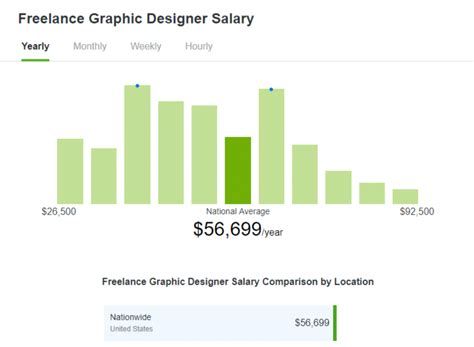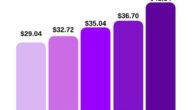Are you a digital artist looking to turn your passion into a lucrative career? In today’s ever-evolving digital landscape, the demand for multimedia artists is on the rise, and with it comes the opportunity to earn a generous living creating stunning digital art. In this blog post, we will delve into the world of multimedia artist salaries, exploring the various factors that influence earnings in this dynamic field.
From understanding the multimedia artist profession to examining the role of experience and leveraging technology to maximize earnings, we will cover it all. We will also explore the demand for digital art and compare salaries across different multimedia art disciplines. Additionally, we will provide tips for negotiating higher salaries as a digital artist and delve into how networking and collaborations impact artist salaries.
If you want to learn how to maximize your earning potential as a digital artist and explore alternative income streams in this exciting field, then this is the blog post for you.
Table of Contents
Understanding the multimedia artist profession
Being a multimedia artist is a unique and diverse profession that encompasses a wide range of creative and technical skills. From digital animation to 3D modeling to web design, multimedia artists use a variety of tools and techniques to bring their artistic visions to life. This profession requires a strong understanding of visual communication, storytelling, and technology, making it an exciting and dynamic career choice for those with a passion for creativity and innovation.
One of the key aspects of the multimedia artist profession is the ability to adapt to new technologies and trends. With the rapid evolution of digital tools and platforms, multimedia artists must constantly update their skills and knowledge to stay relevant in the industry. This includes proficiency in software programs such as Adobe Creative Suite, Autodesk Maya, and Unity, as well as an understanding of emerging technologies like virtual reality and augmented reality.
Another important aspect of this profession is the collaborative nature of the work. Many multimedia artists collaborate with other creative professionals, such as graphic designers, art directors, and software developers, to bring their ideas to fruition. This often involves effective communication, teamwork, and the ability to work within a variety of creative and technical environments.
Overall, the multimedia artist profession offers a dynamic and exciting career path for individuals with a passion for creativity, technology, and visual storytelling. With the demand for digital content on the rise, multimedia artists play a crucial role in shaping the digital landscape and creating engaging and immersive experiences for audiences across various industries.
Exploring various digital art forms
When it comes to the world of digital art, there are countless forms and mediums that artists can explore and create with. From digital painting to 3D modeling, the possibilities are endless.
One of the most popular digital art forms is digital painting, which allows artists to create stunning and detailed works of art using computer software such as Adobe Photoshop or Corel Painter. This medium gives artists the freedom to experiment with colors, textures, and techniques in ways that traditional painting cannot.
Another form of digital art is 3D modeling, which involves creating three-dimensional objects and characters on a computer. This medium is widely used in the animation and gaming industries, allowing artists to bring their creations to life in a digital space.
Other digital art forms include photo manipulation, vector art, digital sculpting, and more. Each form offers its own unique set of challenges and opportunities for artists to explore and master.
Factors influencing multimedia artist salaries
Many factors play a role in determining the salaries of multimedia artists, including skill level, experience, industry demand, and location. These factors can significantly impact how much a multimedia artist earns throughout their career.
One of the primary factors that influence a multimedia artist’s salary is their skill level. Artists who possess a diverse set of skills, including proficiency in various digital art forms such as 3D modeling, animation, and graphic design, are often able to command higher salaries.
Experience is also a major influencer of a multimedia artist’s earning potential. Artists with several years of experience in the industry may be eligible for higher-paying positions, as they are often seen as more valuable due to their knowledge and expertise.
Industry demand and location are two additional factors that can impact multimedia artist salaries. In regions with a high demand for digital art, artists may be able to negotiate higher salaries, while those in areas with lower demand may have more limited earning opportunities.
Analyzing the demand for digital art
As technology continues to advance, the demand for digital art is on the rise. Companies and individuals are increasingly seeking digital artists to create unique and engaging visual content for their websites, social media platforms, and advertising campaigns. The ability to produce high-quality digital art has become a valuable skill in today’s digital age.
Moreover, the evolution of virtual reality and augmented reality technologies has created new opportunities for digital artists. These emerging technologies require immersive and interactive digital content, driving up the demand for artists who can create compelling visual experiences.
Additionally, the widespread use of digital platforms for entertainment, gaming, and e-commerce has led to a higher demand for digital art. From designing characters and game environments to creating digital storefronts and product visuals, digital artists play a critical role in shaping the digital landscape.
Overall, the demand for digital art is expected to continue growing as businesses and industries recognize the importance of captivating visual content in the digital world. This presents exciting opportunities for digital artists to showcase their skills and contribute to the ever-expanding digital art industry.
Comparing salaries across different multimedia art disciplines
When it comes to careers in the multimedia art world, there is a wide range of disciplines that artists can pursue. Each discipline comes with its own unique set of skills and specialties, and as a result, salaries can vary significantly across the different fields. It’s important for aspiring artists to understand the potential earning differences in order to make informed decisions about their career paths.
One of the most well-known multimedia art disciplines is graphic design. Graphic designers are responsible for creating visual concepts for various media, including advertisements, websites, and print materials. According to the Bureau of Labor Statistics, the median annual salary for graphic designers in 2020 was $53,380. On the other hand, 3D animators, who create moving images in a three-dimensional space, had a median annual salary of $77,700. This stark contrast highlights the variability of earnings across different multimedia art disciplines.
Another field within multimedia art is web design. Web designers are skilled in creating and maintaining attractive, user-friendly websites. In 2020, the median annual salary for web developers was $77,200. Moving into the realm of film and video editing, professionals in this field had a median annual salary of $63,780. These figures demonstrate that even within similar mediums, such as digital design or visual media, there can be substantial differences in earning potential.
In conclusion, it’s clear that salaries can vary significantly across different multimedia art disciplines. While some artists may find higher salaries in fields such as 3D animation or web design, others may gravitate towards graphic design or film editing. Understanding the financial landscape of the multimedia art world is crucial for artists to make informed decisions about their career paths and potential earning potential.
Tips for negotiating higher salaries as a digital artist
As a digital artist, it is important to know your worth and be able to negotiate higher salaries for your skills and expertise. One important tip for negotiating higher salaries as a digital artist is to do thorough research on industry standards and the demand for your specific skillset. Understanding the market value of your work can empower you to negotiate with confidence and advocate for fair compensation.
Another tip is to highlight your unique selling points and the value you bring to the table. Whether it’s a specific design style, technical expertise, or a strong portfolio, being able to articulate what sets you apart can be a persuasive factor in negotiating for a higher salary.
Furthermore, being open to discussing performance-based incentives can also be a successful negotiation strategy. Presenting a strong track record of delivering high-quality work and meeting or exceeding targets can demonstrate your potential for future success and justify a higher salary.
Lastly, don’t be afraid to negotiate. Many digital artists may feel hesitant to negotiate their salaries, but it is important to remember that advocating for fair compensation is a crucial part of professional growth and success. By being prepared, confident, and strategic in your negotiations, you can increase your chances of securing a higher salary as a digital artist.
Examining the role of experience in earning potential
Experience plays a crucial role in determining the earning potential of digital artists and multimedia professionals. As artists gain more experience in their craft, they often become more skilled and proficient, leading to higher quality work and greater demand for their services. This increased demand can result in higher pay and better opportunities for experienced artists.
Furthermore, experience allows artists to build a strong portfolio of work and establish a reputation in the industry. This reputation can lead to referrals and repeat business, ultimately impacting the artist’s earning potential. Clients are often willing to pay more for the expertise and track record of an experienced artist, as they view it as a guarantee of quality and professionalism.
It’s important to note that experience isn’t just about the number of years a digital artist has been working in the field. It also encompasses the variety of projects they have worked on and the skills they have developed over time. Artists who have experience in different digital art forms, such as animation, graphic design, or web development, may have a higher earning potential due to their versatile skill set and ability to take on a wider range of projects.
Ultimately, experience can significantly impact an artist’s earning potential by increasing their skills, reputation, and versatility in the competitive digital art industry.
Leveraging technology to maximize earnings
Technology has revolutionized the way in which digital artists can maximize their earnings. From leveraging social media platforms to showcase their work to utilizing e-commerce websites to sell digital art products, artists have countless opportunities to increase their income through technology. By embracing digital tools and platforms, artists can expand their reach and attract a global audience, ultimately increasing their earning potential.
One of the key benefits of leveraging technology as a digital artist is the ability to diversify income streams. Through online marketplaces, artists can sell digital downloads, prints, and even merchandise, allowing them to tap into various revenue sources. Additionally, artists can take advantage of crowdfunding platforms to fund their projects and generate a steady income while pursuing their creative endeavors.
Furthermore, technology enables artists to streamline their workflow and increase productivity, resulting in more output and ultimately higher earnings. With the use of digital software and tools, artists can efficiently create and edit their work, saving time and resources. This increased efficiency allows artists to take on more projects and meet tight deadlines, leading to greater financial rewards.
Lastly, the use of technology also opens up opportunities for digital artists to collaborate with other professionals in the industry. By leveraging communication and project management tools, artists can easily connect and collaborate with fellow creatives, expanding their network and gaining access to valuable opportunities that can further boost their earnings.
How networking and collaborations impact artist salaries
Networking and collaborations play a vital role in determining an artist’s earning potential. By establishing professional connections and working on collaborative projects, artists can significantly increase their visibility and reach within the industry. This can lead to more opportunities for paid gigs, commissions, and partnerships, ultimately impacting their overall income.
Networking allows artists to meet potential clients, patrons, and other industry professionals, which can open up doors to new projects and opportunities. By attending art events, workshops, and industry conferences, artists can expand their network and gain exposure to potential income-generating ventures.
Collaborations also have a direct impact on artist salaries. By teaming up with other artists, designers, or creative professionals, artists can take on larger projects that they may not have been able to handle on their own. This can lead to higher fees, shared royalties, and access to new markets, all of which contribute to increased earnings.
Additionally, the collaborative nature of the digital art world often leads to cross-promotion and co-marketing efforts, which can further elevate an artist’s profile and income. Leveraging the networks and audiences of collaborative partners can result in increased sales, commissions, and brand partnerships, all of which can significantly impact an artist’s bottom line.
Exploring alternative income streams for digital artists
With the rise of the digital age, there are numerous opportunities for digital artists to explore alternative income streams beyond traditional freelancing or full-time employment. One such avenue is creating and selling digital assets on online marketplaces. These assets can range from digital illustrations, graphic designs, 3D models, to motion graphics and more. By leveraging platforms such as Etsy, Creative Market, and Gumroad, digital artists can showcase and sell their creations to a global audience, generating a passive income stream.
Another avenue for digital artists to explore is teaching and creating educational content. With the demand for digital skills on the rise, there is a growing market for online courses, tutorials, and workshops. Digital artists can capitalize on their expertise by creating and selling online courses or hosting webinars to teach others their creative techniques. This not only provides an additional source of income but also positions the artist as an authority in their niche, opening up opportunities for speaking engagements and consulting gigs.
Monetizing social media presence and building a personal brand is also a viable income stream for digital artists. By curating a strong online presence across platforms such as Instagram, YouTube, or TikTok, artists can attract a dedicated following and partner with brands for sponsored content, collaborations, and endorsements. Additionally, they can monetize their content through affiliate marketing, sponsorships, and selling exclusive behind-the-scenes access or digital merchandise to their fans.
Lastly, digital artists can explore the world of licensing and royalties. By licensing their artwork to be used in print, merchandise, or digital products, artists can receive ongoing royalties for their creations. This can be a lucrative source of passive income, especially when their artwork gains popularity and is widely used in various commercial applications.






